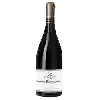
Winery Vicomte Bernard de RomanetCorton Grand Cru
This wine generally goes well with poultry, beef or veal.
Food and wine pairings with Corton Grand Cru
Pairings that work perfectly with Corton Grand Cru
Original food and wine pairings with Corton Grand Cru
The Corton Grand Cru of Winery Vicomte Bernard de Romanet matches generally quite well with dishes of beef, veal or game (deer, venison) such as recipes of romazava (madagascar), veal escalope (piccata milanese) or grandma melanie's cassoulet.
Details and technical informations about Winery Vicomte Bernard de Romanet's Corton Grand Cru.
Discover the grape variety: Béclan noir
Native variety of Franche Comté, formerly grown in Beaujolais. It is registered in the Official Catalogue of wine grape varieties, list A1.
Informations about the Winery Vicomte Bernard de Romanet
The Winery Vicomte Bernard de Romanet is one of of the world's great estates. It offers 322 wines for sale in the of Corton Grand Cru to come and discover on site or to buy online.
The wine region of Corton Grand Cru
The wine region of Corton Grand Cru is located in the region of Côte de Beaune of Burgundy of France. Wineries and vineyards like the Domaine de La Romanée-Conti or the Domaine Méo-Camuzet produce mainly wines red, white and sweet. The most planted grape varieties in the region of Corton Grand Cru are Pinot noir, Chardonnay and Cabernet-Sauvignon, they are then used in wines in blends or as a single variety. On the nose of Corton Grand Cru often reveals types of flavors of cherry, caramel or nutmeg and sometimes also flavors of clove, tar or dark fruit.
The wine region of Burgundy
Bourgogne is the catch-all regional appellation title of the Burgundy wine region in eastern France ("Bourgogne" is the French name for Burgundy). Burgundy has a Complex and comprehensive appellation system; counting Premier Cru and Grand Cru titles, the region has over 700 appellation titles for its wines. Thus, Burgundy wines often come from one Vineyard (or several separate vineyards) without an appellation title specific to the region, Village or even vineyard. A standard Burgundy wine may be made from grapes grown in one or more of Burgundy's 300 communes.
The word of the wine: Bracket
Black grape variety from Provence which contributes to the personality of the red wines of the AOC Bellet, near Nice. It gives a lightly colored but full-bodied wine that is good with age. Syn.: brachet.












